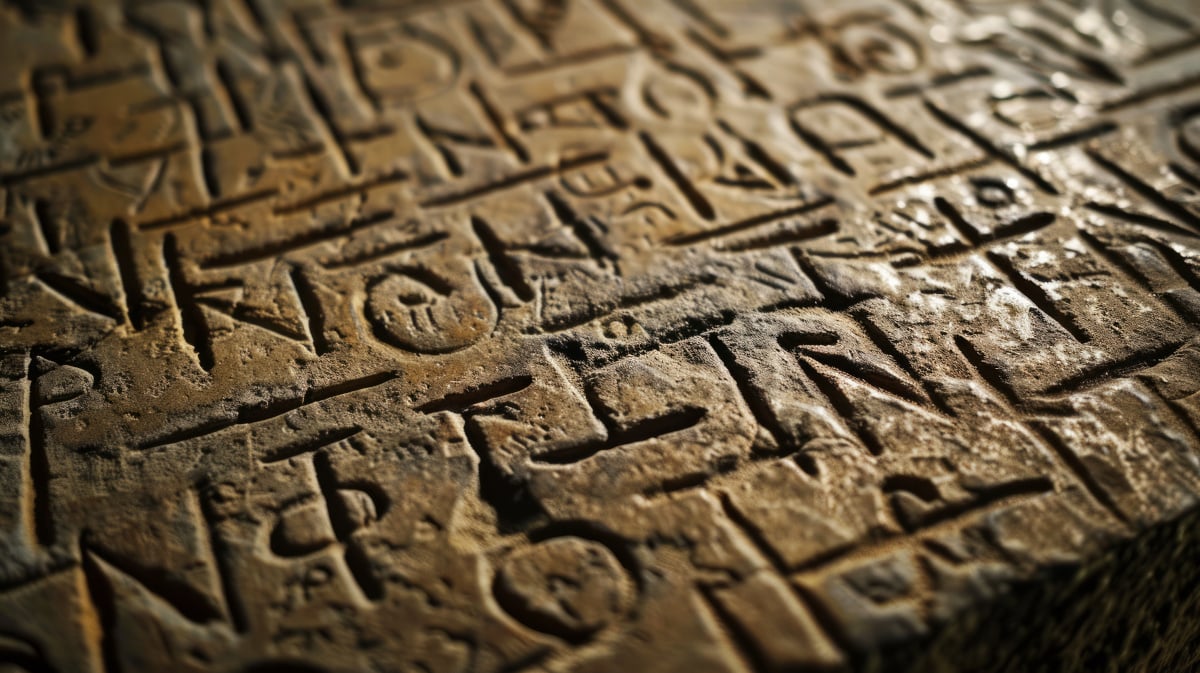
The Origins and Development of Alphabets in Ancient Cultures
In the course of early human development, there appeared the distinct need to write. To protect thoughts and ideas and tasks from the passing of time, to remember and keep for posterity. Oral tradition was never as precise, and not immortal. But written things were. This is why the earliest human history is marked by a quest to create the ideal writing system, with which to protect knowledge. Thus, the development of alphabets marks one of the most significant advancements in human history, shaping the way societies communicate, preserve knowledge, and transmit culture. How did they come to be? And which civilization was the first to write?
Ancient Alphabets and the Desire to Write
Before the invention of writing, oral traditions served as the primary means of preserving history and knowledge. However, oral methods were inherently limited, as they relied on memory and were susceptible to change and loss over time. The advent of writing systems revolutionized this dynamic, enabling the accurate recording and dissemination of information across generations and geographies. Alphabets represent a critical stage in the evolution of writing systems, characterized by a set of letters or symbols that represent phonemes, the smallest units of sound in a language. Unlike logographic systems, which use symbols to represent words or morphemes, alphabets offer a more efficient and flexible means of writing, as they typically require fewer symbols to represent the sounds of a language.
- Scribes in Ancient Egypt: Custodians of the Voice and Words of the Divine – Part I
- The Origins of Welsh Bardic Scripts
Before alphabets, ancient civilizations used logographic and syllabic writing systems. Logographic systems, such as Sumerian cuneiform and Egyptian hieroglyphs, employed symbols to represent words or concepts. These systems were complex and required a large number of symbols, making them difficult to learn and use. Sumerian cuneiform, developed around 3200 BC, consisted of wedge-shaped marks impressed on clay tablets. It was primarily used for administrative and economic purposes but eventually evolved to include literary and religious texts.

Sumerian Cuneiform sales contract. (Public Domain)
Similarly, Egyptian hieroglyphs, dating back to around 3100 BC, used pictorial symbols to represent words and sounds. Hieroglyphs were used for religious texts, monumental inscriptions, and administrative records. The complexity of these systems necessitated a class of scribes, individuals specially trained to read and write.
Syllabic systems, such as the Linear B script used by the Mycenaeans in Greece, represented syllables rather than individual sounds. Linear B, dating from around 1450 BC, was used primarily for administrative purposes, recording inventories, and transactions. Syllabic systems simplified writing to some extent but still required memorizing a significant number of symbols.
Preserving Memories in Written Word
The first true alphabet is believed to have emerged in the early second millennium BC in the region of the Sinai Peninsula. Known as the Proto-Sinaitic script, this early alphabetic system was influenced by Egyptian hieroglyphs and developed by Semitic-speaking peoples. Proto-Sinaitic was a consonantal alphabet, meaning it primarily represented consonant sounds, leaving vowel sounds to be inferred from context. This characteristic would become a defining feature of many Semitic alphabets.
“In examining the evolution of writing systems, it becomes evident that the development of the alphabet was not merely a technological advancement but a cultural revolution that reshaped human thought and communication. The transition from complex logographic scripts to more accessible alphabetic systems facilitated unprecedented levels of literacy and knowledge dissemination across diverse civilizations."
- Harrison, E. V. "The Genesis of Alphabets: Cultural Impacts and Linguistic Evolution," Journal of Ancient Scripts and Writing Systems, Vol. 14, No. 2, 2024, pp. 112-135.
Become a member to read more OR login here




